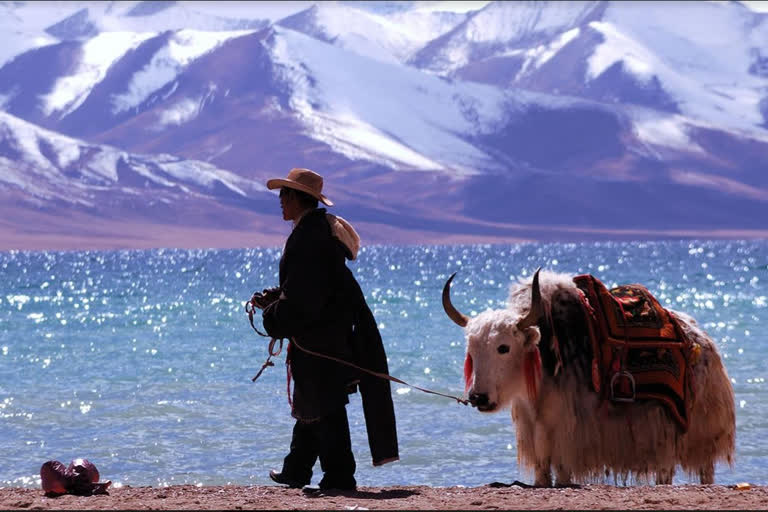New Delhi: In just 15 days from now, from July 15 onwards, China will begin a mega relocation of ethnic Tibetans from high altitude and remote areas to settle down in townships and urban localities in lower altitude regions that are equipped with modern infrastructure and amenities of life like roads and airports, water supply, grocery and convenience stores, internet, etc.
By August 11, more than 26,300 people from ‘difficult’ areas will be settled in Sinpori in the Shannan prefecture which borders Bhutan and India’s Arunachal Pradesh. ‘Difficult’ areas refer to remote reaches located at 4,800 metres and more altitude. The plan also entails shifting locals—who are of Tibetan ethnicity—from 58 ‘high altitude’ villages to 12 townships in the Tsonyi, Amdo and Nyima counties in Nagchu prefecture north of Lhasa, Chinese media has reported.
The overall project aims to relocate more than 130,000 Tibetans in about 100 townships by 2030 with the declared state policy of enhancing the quality of life of the people by providing modern amenities while protecting the pristine high-altitude natural environment.
China’s state-controlled news agencies quoted Wu Wei, director of the regional forestry and grassland administration, as saying: “The relocation scheme reflects a people-centred development thought, taking consideration of both the ecological protection and people’s demand for a better life.”
Also read: China voices opposition to India's reported plans to hold a G20 meeting in J&K
Opposite Policy
On the other hand, since 2017, China has been relentlessly pursuing a policy of constructing ‘Xiaokang’ villages in the border areas, mainly along the blurry India-China border that is not demarcated in many stretches. The ‘Xiaokang’ plan entails setting up 628 well-laid out modern villages across 21 border counties to be populated by an “ethnically–mixed” community of about 242,000 people in the border areas from Ngari, across Ladakh, to Nyingchi, across Mechuka in Arunachal Pradesh to Myanmar.
‘Xiaokang’ means all-inclusive and ‘moderately prosperous societies where people are free from want and toil. “Ethnically–mixed” communities in this case would comprise settling ethnic Han Chinese in these areas. About 92% of China’s population is of Han ethnicity while Tibetans make up for less than 0.5%.
While it is believed that settlers in ‘Xiaokang’ villages will be able to operate as the “eyes and ears” of the government in the border areas, they will also be able to be on the lookout for activities by supporters of the Dalai Lama, Tibetan Buddhism’s spiritual leader who lives in exile in India.
A June 22 report in China’s state-owned online Tibet news service said that the new border villages “had become new homes for cadres and people of all ethnic groups” adding that they now have “smooth roads, prosperous industries, complete infrastructure.”
Interestingly, China has enacted a legal framework for the land borders effective from January 1, 2022, where it makes the border residents responsible for maintaining the sanctity of the border. Article 13 of the new law states: “Citizens and organizations shall maintain the security and stability of land borders and borders, protect landmarks and border defence infrastructure, and cooperate with and assist in the work related to land borders.”
Article 23 states: “Citizens and organizations shall support border defence duties and control activities, and provide them with convenient conditions or other assistance.”
Since 2000, under then-President Jiang Zemin’s “Western Development Campaign”, China has been pursuing a policy of demographic and cultural assimilation by encouraging ethnic Hans to migrate to Tibet which has a very low-density of population. It is believed that the policy will lead to a demographic transition where more Hans will settle down in the Tibetan homelands.



